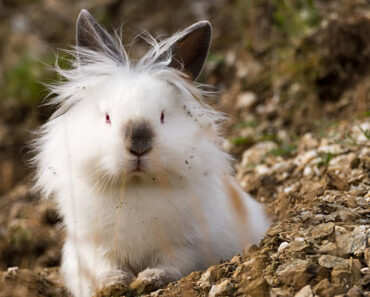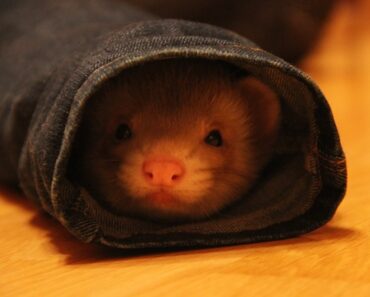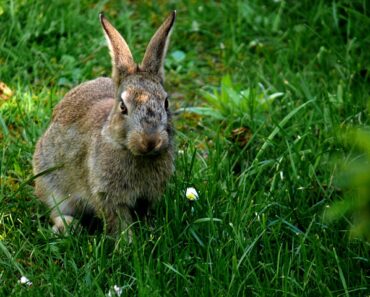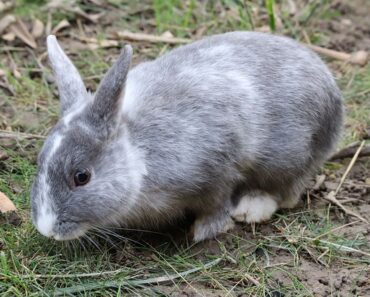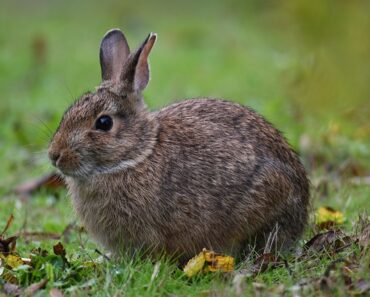Adopting a dwarf rabbit will make children and their parents happy. Take advantage of the many information about the extra dwarf rabbit to know how to raise it and take care of it on a daily basis. Your little ball of fur is generally fragile, requires regular care at home and a lot of attention, just like Exotic Pets. Who really is the extra dwarf rabbit? Informed and immediate answer!
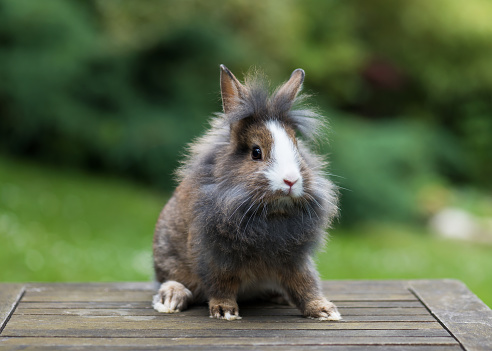
The origins of the extra dwarf rabbit
Extra dwarf rabbit or dwarf rabbit or toy rabbit are all synonymous expressions commonly used in marketing or in pet shops. In other words, it is a sales argument that works well. The term “dwarf” refers to an adult rabbit that weighs less than 1.5 kg. You may also have heard of the angora rabbit, a small rabbit as adorable as a stuffed animal. By the way, teddy rabbit means plush in English. Teddy rabbit or Angora rabbit have the same meaning.
All domestic rabbits come from the European rabbit: rabbit of Garenne or common rabbit, oryctolagus cuniculus of its scientific name. The dwarf breeds have been selected from rabbit farms. The small rabbits of the ermine breed gave birth to the very small dwarf rabbit. According to the standards of the French rabbitry society, their weight does not exceed 1.5 kg at adulthood. The very first dwarf rabbit was born in 1940 between an ermine and a wild rabbit.
The character of the extra dwarf rabbit
The dwarf rabbit is classified as a lagomorph, a mammal like rabbits and hares. It is herbivorous and feeds only on plants. Contrary to what everyone may think, it is not a rodent, but simply a rabbit. Indeed, the chinchilla, the hamster, the guinea pig, the gerbil, the mouse or the rat, are part of the big family of rodents.
This diurnal rabbit will be active during the day and will need to rest at night. That’s good, you have the same rhythm as him! His lively and funny character will make him a great playmate.
It is recommended to adopt two females, or a male and a female if you plan to breed dwarf bunnies. However, you’ll need to separate the pair so as not to exhaust the female during intensive breeding. If you take two males, the first few months will go well, but when they reach sexual maturity, they will fight to the death. Females get along well with each other, especially as they grow up together. Ask a specialist breeder to confirm the sex of the rabbit. It is difficult to tell the gender of a young Exotic Pet.
The dwarf rabbit is an ideal pet for young children in school, under the supervision of parents. It gets along very well with the guinea pig with which it will share many moments of complicity. On the other hand, the cohabitation with a dog or a cat is not really favourable to a family waiting ground, in the same way, it will not appreciate the too noisy birds. Some exceptions exist depending on the education of each one and the habits of the household.
The owner of a dwarf rabbit will have to be patient, calm and gentle with his little animal who will need peace and quiet and the essentials in food and hygiene. Take the time to get him used to the contact of his fellow creatures and the people around him. Gradually, it will let itself be approached and touched once tamed by you. Finally, once your dwarf rabbit has settled into its familiar environment, you can take it out of its cage to enjoy a nice patch of grass and hug it tenderly.
Aggressive or destructive behavior indicates that your rabbit is particularly distressed by a fellow rabbit, another animal or an unsuitable environment. You must take care of him and improve his living conditions. Double your vigilance on electrical cables, telephone cables or batteries, which are easy to nibble by a rodent, a rabbit or a ferret.
The physique of the extra dwarf rabbit
Its life expectancy can reach 10 years, provided you take good care of it. Its “miniature” morphology makes it easy to live in an apartment. It will be necessary to pay a lot of attention to its fragile health to allow it to live near you in the best conditions. A weakness is to be noted on its respiratory system and the stress.
The color and length of its hair can vary according to the breeds of dwarf rabbits: Angora Dwarf Rabbit, Aries Dwarf Rabbit, Lionhead Dwarf Rabbit, Ermine or Polish Rabbit, Rex Dwarf Rabbit, Fox Dwarf Rabbit and Satin Dwarf Rabbit, the last three being less common. White, brown, gray or two-tone, all styles are adorable with their round muzzle and small ears.
Be careful, we deviate from the extra dwarf species with the angoras and the Havana rabbit whose weight is between 2.5 kg and 4.5 kg. If your pet rabbit weighs between 800 grams and 1.5 kg, rest assured that it is an extra dwarf rabbit.
The extra dwarf rabbit in everyday life
Its habitat
Although your little rabbit doesn’t take up much space in the house, the size of its cage is not to be overlooked. Your fur ball will need space and an environment adapted to its needs. Here’s the perfect arsenal for a happy extra dwarf rabbit!
- Spacious cage: recommended dimensions are 100 x 50 x 45 cm or 100 x 70 x 50. Cover the floor of your cage with wood shavings, hemp litter or hay for example. Place the cage in a quiet place, away from draughts, at room temperature between 20 and 25 °, preferably a little high so as not to touch a cold floor or feel the danger. He likes the life around him in the house, you should not isolate him too much and never expose him to the sun.
- Toilet corner: the corner toilet allows your rabbit to clean its hair independently. Choose shavings or hemp litter. Rabbits are by nature clean animals, like cats. He will appreciate doing his business in a regularly renewed litter box or his daily toilet in an enriched bath soil.
- Food bowl and water dispenser: a small stainless steel or plastic bowl will do the trick to consume its pellets. A bottle is highly recommended to keep the water clean and to avoid the little rabbit drowning in a water container that is too big for him.
- Transport cage : the transport cage or bag is useful for your visits to the veterinarian or your car trips.
Its diet
Dwarf rabbits eat mainly green hay. As they reach adulthood, you can supplement their diet with a complete rabbit mix or hay, oats, pellets and fresh foods: artichokes, chard, celery, kale, zucchini, cucumbers, endives, spinach, fennel, turnips, parsnips, peas, radishes, a few beets, broccoli, carrots and green beans in small quantities.
Also offer him organic fruits and vegetables, good for his health, such as seedless apples, pears, peaches or bananas. Your little rabbit will have plenty of fresh water and something to file down his incisors like willow sticks to gnaw on. Also consider rabbit games or treats, and a mineral block that provides essential vitamins and minerals.
Finally, to avoid the inconveniences associated with hairball ingestion, give him malt, an excellent digestive aid.
His hygiene
Brushing the hair
Brushing your rabbit twice a week will help remove dead hair from its coat during the moult. Take care of its fur to promote good blood circulation and prevent it from swallowing hairballs that disrupt its intestinal transit. For example, the Angora rabbit needs to be shorn every 3 months to boost its well-being.
No water bath, but a sand bath with natural bathing soil! If necessary, you can moisten a cloth and clean the dirty paws of your little protégé.
Tooth wear
The dwarf rabbit has to wear out its incisors which are constantly growing. It therefore needs to gnaw on natural wood to wear them down. A too long dentition will prevent your rabbit from eating properly. You will then have to go to the vet to cut them.
Trimming the claws
It is essential to trim them with maximum care so that they don’t become too big or hurtful. Get a real rabbit clipper or visit your veterinarian who will explain the right way to do it.
Cleaning the cage
The cage, feeder and waterer should be disinfected at least once or twice a week to prevent bacterial or infectious diseases in your rabbit. Starting with regular litter box changes! A rabbit likes to be clean and does not like dirt under its paws or on its fur.
A rabbit can become as clean as a cat, if you give him the means to do so. He needs to understand that his litter box is a place to relieve himself. Regularly pick up his droppings scattered around the cage and leave a few marks in his little litter box.
Walks in the garden
This active breed needs daily exercise. One to two hours of exercise is good for a dwarf rabbit’s health.
Don’t leave anything lying around that will arouse its natural curiosity, such as electrical wires, laundry, paper, etc. There are many dangers in a house. You will have to educate him with kindness and teach him not to touch certain objects such as tasting the carpet or the furniture in the living room.
Sudden movements with your pet could stress and frighten it. Also, watch where you walk, as he may be under your feet. The best thing to do is to have an outdoor hutch that offers a play area and an outdoor space in the garden, in a secure enclosure. You will return him to his indoor hutch at feeding time or when the weather is no longer suitable.
Its health
The dwarf rabbit’s fragile health remains under surveillance as well as its sensitivity to stress. Noise, loud music, the agitation of curious children, a playful dog or cat, wind and temperature shocks are all turbulence to be eliminated.
If he suffers from chronic diarrhea, make sure he doesn’t get dehydrated (keep an anti-diarrheal on hand just in case) and ask your veterinarian for advice.
It is preferable to adopt a baby rabbit not before 2 months of age, because the weaning period is essential for its development. After a month, he only starts to eat on his own, but he still needs his mother to feed him.
Vaccination is necessary for a rabbit in order to fight against common diseases such as myxomatosis transmitted by fleas or mosquitoes. Sterilization is also recommended, especially between two males or between males and females, if you do not want to breed.
A healthy dwarf rabbit
Here are the characteristics of a healthy extra dwarf rabbit:
- A shiny, smooth, silky coat;
- A peaceful, happy and active sleep during the day;
- A peaceful, happy and active sleep during the day; – Toneful hopping and the desire to hide in its favorite house.
A sick dwarf rabbit
A dwarf rabbit in poor health has a worrying attitude:
- It doesn’t move and stays in a corner of its cage;
- He shows watery or red eyes;
- He sneezes, has a runny nose and coughs often;
- He has a swollen belly, bristly and dull hair.
Holding a rabbit
Handle a rabbit with care and supervision. Try to pick up your rabbit gently and not too high in case it suddenly jumps out of your hands.
Some people are able to pick up their rabbits by the skin of their back and put a hand under their buttocks. Others take their rabbits under the body while sliding the other hand under the hindquarters. Stick him against you to reassure him and get him used to your caresses.
All his strength is in his hind legs. He will quickly jump up and escape from you by mistake. Beware of the risk of falls and inevitable fractures. Always keep a hand on his neck to keep him close to you.
Playing with your rabbit
A rabbit can quickly become bored, especially if it is left alone most of the time. A lonely rabbit can become depressed, which is why it’s important to stimulate and play with it, or even adopt two rabbits to keep them company. There are many activities to set up such as Agility for rodents, an ideal health course.
Offer your pet gnawing toys, wood shavings or food dispensers, which makes it more fun to take its meals. Motivate your pet, help it develop its intelligence and give it the option of going to its burrow to make it feel safe.
TO REMEMBER! Your extra-dwarf bunny, as the name suggests, is a great new pet! For its blossoming, it is advisable to respect the hygiene care, an adapted food, a zen environment and to lavish him a maximum of love. Don’t hesitate to adopt him quickly and carefully prepare a nice cage and an outdoor enclosure.

